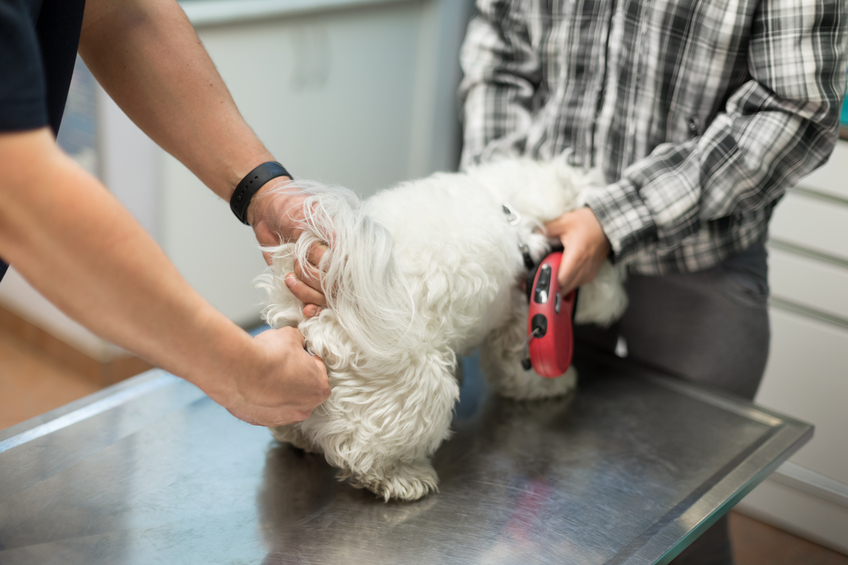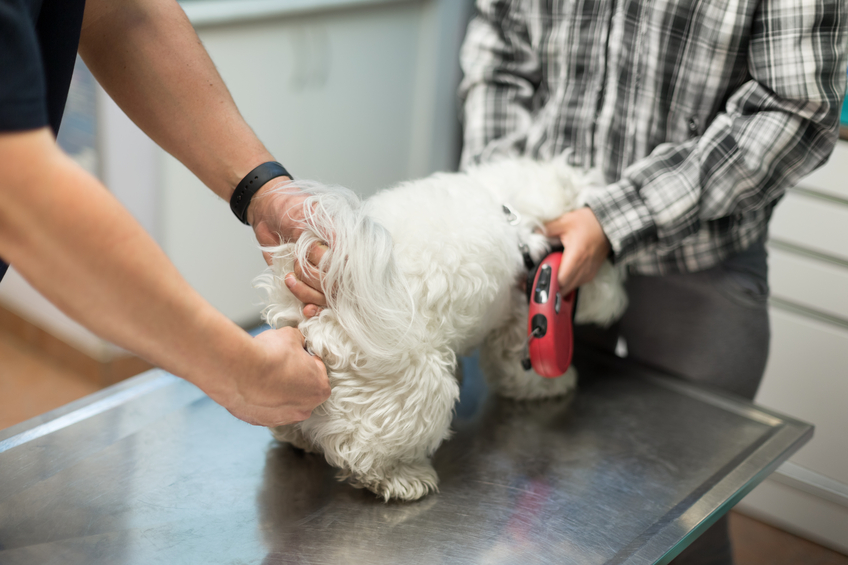 Many veterinarians are presented by concerned pet owners about the animal’s scooting or dragging their backsides along the ground by holding the back legs up in the air and pulling themselves forward by the front legs whilst remaining in a seated position. The owner often thinks that the animal may have worms and is trying to get the worms out their backside by dragging it along the ground. Although this is quite possible to be the case, especially in the case of tapeworm infestation, it is unlikely to be the cause. The most common cause for this behaviour is uncomfortable anal glands.
Many veterinarians are presented by concerned pet owners about the animal’s scooting or dragging their backsides along the ground by holding the back legs up in the air and pulling themselves forward by the front legs whilst remaining in a seated position. The owner often thinks that the animal may have worms and is trying to get the worms out their backside by dragging it along the ground. Although this is quite possible to be the case, especially in the case of tapeworm infestation, it is unlikely to be the cause. The most common cause for this behaviour is uncomfortable anal glands.
Anal sac disease is the most common disease entity of the anal region in dogs. The anal sacs, commonly referred to as anal glands, are located on either side of the anus at 4 ’o clock and 8 ’o clock and are present in cats and dogs. The sacs are reservoirs for a secretion produced by glands within the wall of the sacs. The sacs have little ducts, which open just within the anus and connect the sacs to the outside. The secretion is released when the animal passes stool or when they are scared or nervous. It is often yellowy brown to grey and foul smelling to us, but it is an important scent marker in dogs. These are the same glands that are responsible for the foul smell secreted by skunks when they are threatened.
The sacs can become inflamed, infected and blocked and occasionally tumours can form within them. Small breed dogs appear predisposed to anal sac disease, although medium and large breed dogs can be affected too.
Why do the anal sacs cause a problem in dogs?
Anal sac disease is relatively common in dogs. The anal glands become blocked or impacted due to the ducts becoming inflamed. The anal gland secretion thickens and the sacs become full and swollen. The glands can be described as being inspissated. It can become painful for the animal to pass a stool or defaecate. If the sac is not emptied, the contents are a perfect medium for bacterial growth and for an abscess to form. The abscess will appear as a red, painful and swollen area on one or both sides of the anus. Sometimes, the abscess can burst. If left untreated, the abscess can spread infection to the anus and rectum.
What clinical signs can you expect?
Clinical signs are associated with pain when the patient sits or passes a stool. Commonly, anal gland disease will present with the dog licking the area around the anus, scooting (rubbing the anus along the ground) and the animal may experience pain when passing stool. Sometimes, an abscess may form that then bursts. Blood or pus may be seen around the anus.
What treatment is there for anal sac disease?
On clinical examination, the veterinarian will perform a digital exam of the rectum. This is very useful as the sacs can be nicely felt or palpated. The vet will try and express the glands. If there is an abscess or a tumour, this is not always possible. Normal anal sac fluid is thin and the sacs are easily expressed. The anal sac fluid can become very thick and difficult to express. If the sacs are just inflamed, they may need to be expressed manually over a few days. In the case of an abscess, antibiotics and anti-inflammatories may be required. Sometimes, antibiotics may be instilled into the sac for a few days. In some very severe cases and in the case of anal sac tumours the sac and duct will need to be removed surgically by a veterinary surgeon.
Can anal sac disease become a chronic problem?
Some dogs can have recurrent anal sac impactions or abscess. Overweight dogs tend to be overrepresented, as the sacs do not always empty completely. With each impaction or abscess, the sacs can become scarred and so making emptying even more difficult. The anal sacs may need to be manually expressed more regularly and in chronic cases surgically removing the gland may be an option. Adding fibre to the diet to bulk up the faeces may assist in emptying the sacs as the stool passes through the anus. Speak to your vet about your pet’s nutrition to ensure you are using the best diet possible to counter this disease.
Although the anal sac secretion is an important territorial scent marker, it is not important in the domestic dog, so removing the sac should not cause any adverse effects if done correctly.
Even though anal sac disease is the most common reason dogs scoot, one has to always ensure that it is not in actual fact worms that cause this behaviour. It is sound practice to deworm your dogs and cats at least three to four times a year with a good broad spectrum dewormer you can get from the vet.
© 2018 Vetwebsites – The Code Company Trading (Pty.) Ltd.


